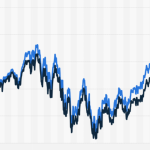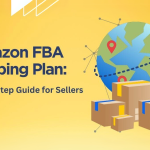Every good business is agile – a forward-thinking organisation adapts and evolves as time goes by. Attitudes towards employee engagement shift in line with research. Smart goals are assigned based on market factors and your workforce’s skill sets. Even the products and services we offer will vary depending on what is popular and in-demand in any given period. In much the same way, SEO goals and KPIs need to be regularly reassessed and updated – especially when you consider the number of Google algorithm updates we see in a year.
SEO isn’t a static field. Experts in the field are constantly trying new methods and techniques to get their clients to the top of Google, and as such, new best practices are recommended. What worked in 2020 will not necessarily serve you well in 2023 and beyond. So if you are currently considering your digital marketing strategy, you might be wondering – what goals can I set that will give me the best results in the coming year? Let’s explore the top SEO KPIs to track in 2023.
1. Bounce rate
When you write content for your website, you are doing so in a purposeful way – that is, if you are doing it right. You want to attract people to your website, yes, but you want to attract the right type of people, and you want to make sure they find just what they’re looking for when they click through to your page in the search engine results. A lot of this comes down to choosing the right keyword – what word best describes your content? What do people search for when they are looking for your content? When they find your content, what other information will they be looking for? How can you make your content more comprehensive and complete?
If you do a poor job with your content, your bounce rate will skyrocket. This is a signifier to Google that your website isn’t quality; people aren’t getting much out of your content, and they are leaving pretty quickly. This will ultimately have a detrimental impact on your rankings. However, if your bounce rate is low, this is an indicator that you know what you’re doing – your content is comprehensive, informative and engaging. It’s not possible to have a 0% bounce rate, but aim to get as close to it as possible. If you know your bounce rate is over 70% – well, that’s a sign that something is clearly wrong.
Maybe people are expecting something completely different when they click through to your page. Reassess your content and see what you can do to improve. Or it could be down to other factors such as unbearably slow site speed or terrible navigation.
Whatever it is, check out your content and your technical SEOand see how you can change things up.
2. Engagement time
Engagement time refers to how long someone spends on a page on your site. In many ways, it goes hand-in-hand with bounce rate. You want a high engagement time for each user – this implies that visitors are finding content engaging. As with bounce rate, if you find that you have a low engagement time, you will want to look at technical issues or intent concerns. This is a key KPI to track if you want to ensure quality and know how your site is performing.
3. Organic traffic
If we’re talking SEO, forget about paid traffic – what you want to pay attention to is organic. You want people finding you due to increases in your rankings, due to your quality, SEO-optimised content and through appropriately placed backlinks with reputable, reliable and relevant domains. Though certainly some websites will see some seasonal fluctuations, you will want to keep an eye on year-on-year (YoY) organic traffic comparisons and see a steady upward incline in the organic traffic to your website. If this number is stalling or dwindling, this is something you need to address.
4. Visibility
Your website may as well not exist if it isn’t being seen, making visibility a key SEO KPI for 2023 and beyond. The more visible your site is, the more it is shown in the search engine results, the better placed you are to capture traffic, and the more leads you have at your disposal to convert. Of course, visibility is directly tied to organic traffic – as with engagement time and bounce rate, they go hand-in-hand, and where one increases, generally, the other will also.
5. Customer lifetime value
All solid businesses are aware that in order to survive, customer loyalty is of utmost importance. Keeping a customer happy and retaining that customer will provide more value in the long run than gaining (and potentially losing) new customers – which will certainly be the case if you aren’t keeping your existing customers happy! The customer lifetime value metric looks at how much revenue each customer has supplied over a given period of time. This is a KPI you definitely want to start tracking now if you haven’t yet done so.
When it comes to deciding on numerical goals for each KPI, obviously this will change drastically depending on your company, the industry and your particular goals. As with most goals, it makes sense to keep expectations reasonable and realistic. However, the overall goal we should all be striving for in terms of SEO is to provide quality and to really give your target customer what they need and what they want – tapping into this will ultimately drive high levels of leads and conversions.
Lynn Martelli is an editor at Readability. She received her MFA in Creative Writing from Antioch University and has worked as an editor for over 10 years. Lynn has edited a wide variety of books, including fiction, non-fiction, memoirs, and more. In her free time, Lynn enjoys reading, writing, and spending time with her family and friends.















